The Most Beautiful Temple You’ve Never Heard Of
Top photo: photoBさん on PhotoAC
“Mom, I want a baby sister,” a little girl said excitedly, pulling on her mother’s arm.
You can hear conversations like this constantly when you stroll the beautiful grounds of Nakayama Temple. Kyoto might be Japan’s most famous temple hub, but there are plenty of other religious sites throughout the country without the crowds. The temple is located in Takarazuka, Hyogo and boasts a history of more than 1300 years. Admission is free, making it perfect for a day trip or quick stop on a Takarazuka itinerary.
 People visit to pay tribute to the Goddess of Mercy (Kannon). This deity is in charge of blessing worshippers with babies and healthy deliveries. Women come with wishes for a smooth pregnancy. Siblings ask for a little brother or sister.
People visit to pay tribute to the Goddess of Mercy (Kannon). This deity is in charge of blessing worshippers with babies and healthy deliveries. Women come with wishes for a smooth pregnancy. Siblings ask for a little brother or sister.
Extended families come with their newborn to give thanks for the new baby in their lives. This is a formal event with new parents bringing out their best clothes and sometimes a professional photographer. Even in the hot and muggy weather, these families dress like they are going to an important business meeting or an overpriced hotel restaurant.

While the architecture and greenery of the temple are lovely, the most impressive aspect of the temple is the bird’s eye view of Takarazuka and the surrounding mountains. You can rest your legs at one of the temple halls where you can sit in the shade with your snack or drink and look out the giant windows. There are public restrooms, vending machines, nursing rooms, two small restaurants, and even escalators and elevators to access certain areas of the temple.
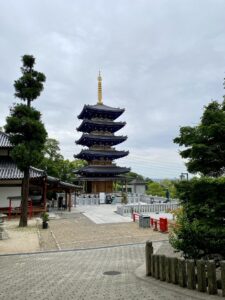 Nakayama Kannon station on the Hankyu line is a quick one minute walk from the temple. This station is just a 30-minute ride from Osaka Umeda station. The JR Nakayamadera station is 10 minutes away on foot and uses the Fukuchiyama line. There are no parking lots on the grounds so those traveling by car will have to find a space at a nearby parking lot and walk to the temple.
Nakayama Kannon station on the Hankyu line is a quick one minute walk from the temple. This station is just a 30-minute ride from Osaka Umeda station. The JR Nakayamadera station is 10 minutes away on foot and uses the Fukuchiyama line. There are no parking lots on the grounds so those traveling by car will have to find a space at a nearby parking lot and walk to the temple.
I visited the temple on a humid summer Monday. I loved seeing the lush greenery at every turn but I am curious about how the temple looks during cherry blossom season or when the fall leaves change color.
I may not have visited the temple hoping for a child of my own, but seeing so many people expressing gratitude for their families tugged at my heartstrings. Hopefully that little girl can come back with her new baby sister soon.
Access:
Omotoyama Nakayamadera on Google Maps
〒665-85882-11-1 Nakayamadera, Takarazuka City, Hyogo Prefecture
Read more about visiting temples and shrines across Japan here on MUSUBI!
Photo & Information Credits:
Top photo: photoBさん on PhotoAC
All additional images taken and provided by Sadie Welhoff, used with permission
Sources used for this article:
https://www.nakayamadera.or.jp/about/history.html
All other content (text) created by the original author and © 2022 MUSUBI by Borderlink
Raising pets is very common by people of all ages all around the world. As a child, my family and I raised a dog. Like most dogs, she was beautiful, very smart, and clever.
Being an ALT at an elementary school has given me the joy of seeing students enjoy finding different animals, especially insects, to keep as pets in their schoolyards. I have seen students diligently carry their plastic insect boxes around with them, showing me various kinds of pets. For example, one student showed me his pet praying mantis! It was a curious praying mantis, very long and very strong.
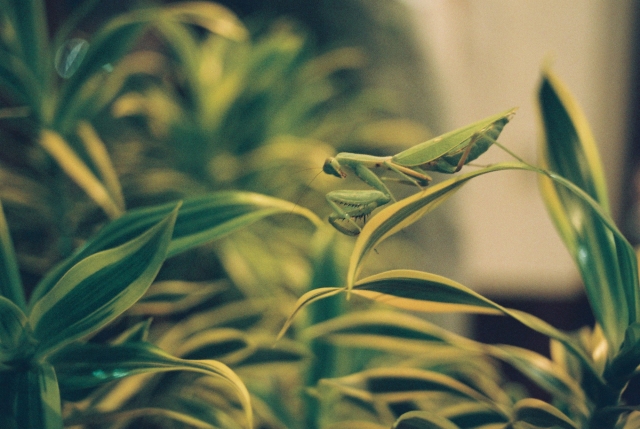
Other students have shown me their pet grasshoppers and beetles. I carefully looked at the students’ pets and always thanked them for showing me their pet friends. Looking at students’ pets is a natural way to start a conversation. We talk about what kind of pet they have, what their pet’s name is, how old their pet is, and we can use adjectives to describe their pet (eg: big, small, beautiful, pretty, long, short, etc).
Meet the Beetles
We can take this one step further and we can become pet owners ourselves, which is what I have done. I live in an apartment with my wife and two sons. Our sons are currently in elementary school in the sixth and fourth grades.
About five years ago, my younger son bought two beetles at a store and brought them home. I really did not know that children kept insects, such as beetles, as pets. I was raised in an area where insects are not so friendly. Insects such as mosquitos, fire ants, bees, wasps, and hornets were everywhere. These insects are bothersome if not dangerous to us humans, so, it was difficult for me to like them very much.
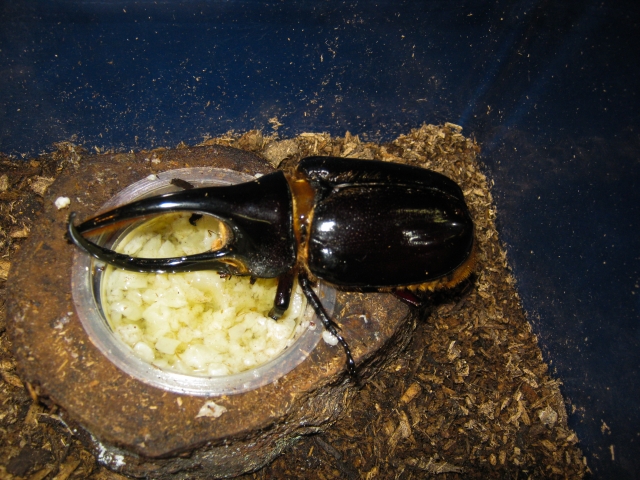
So, for that summer, we had two beetles. I reluctantly agreed to keep them. I was not sure, at the time, how these beetles were going to behave. After we had them for a week, I started to like these beetles as they were quite harmless. We kept them in a plastic box, fed them jelly, watered the soil that was in the box, and enjoyed watching them climb around and play In their box.
Never The End
Then, one of the beetles died, after we had them for ten days. At the time, I did not think much of this beetle’s death. The remaining beetle managed to live with us until late September, which means that we had it for about six weeks. I really got attached to the second beetle. I would constantly send text messages to my family asking about the condition of the beetle (“Is it OK? Did you feed it?” etc).
Then, when time came for this second beetle to die, I was heartbroken. My family and I took the beetle’s body to a nearby park and had a burial service for it. I was sad, yet, I knew this was natural. Then, we cleaned up the plastic box where the beetles lived and we found an egg! It was a beautiful egg! We had hope and we had a new pet! We were able to take care of this egg through winter and raised it through the following year’s summer. It was great!
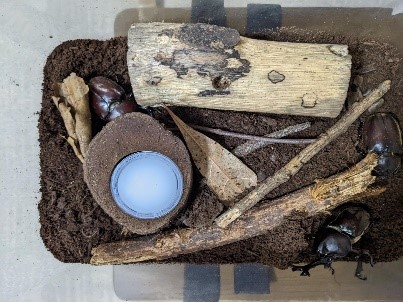
Now, my family and I raise beetles every year. Like all pets, beetles are a part of the family. They give us unconditional love and thanks. When we are lonely, the beetles are there for us. When we are tired or sad, beetles are there for us. It’s great! Even better is that we can bond with students and other people and talk about our pets together in English! It’s a beautiful thing!
Photo Credits:
All additional images:
3 – Provided by the original author (used with permission)
All other content (text) created by the original author and © 2022 MUSUBI by Borderlink
Top photo: th0852さん on PhotoAC
 Let’s face it, looking for an apartment is not only tedious, but daunting as well. However, we all have to look for apartments depending on the ever-changing circumstances in our lives.
Let’s face it, looking for an apartment is not only tedious, but daunting as well. However, we all have to look for apartments depending on the ever-changing circumstances in our lives.
In this article, I offer a few of tips I’ve learnt and discovered when apartment-hunting myself. I’ll also share some of the essential terminology to hopefully make your experience easier!
Step 1: Do the Research!
Common Terms
Properties are called 物件「bukken」. You will also come across terms such as 借りる「kariru」or 賃貸「chintai」. These means “to borrow” and “rent or lease“ respectively.
These are the three keywords that you’ll need to look for to be pointed in the right direction. From there, things are pretty straightforward! Mostly.
Platforms
You can look for properties on two platforms:
1) 不動産「fudousan」= physical property agents
2) サポートサイト「sapoto saito」= sites that compile properties from different property agents
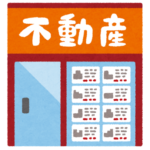 Physical property agents are realtors that have physical stores, of course. You can glance at featured properties on their store front and walk-in for a free consultation.
Physical property agents are realtors that have physical stores, of course. You can glance at featured properties on their store front and walk-in for a free consultation.
Of course, this requires you to have at least conversational ability in Japanese in order to get your request across.
 If that was too much of a hurdle for you, this next option is not only convenient, but offers a more comprehensive range of properties. Support sites compile properties from different property agents in the area. You can even filter your search to find the exact property that suits you. Some support sites include Suumo, Lifull Homes, athome, able, apamanshop and chintai.
If that was too much of a hurdle for you, this next option is not only convenient, but offers a more comprehensive range of properties. Support sites compile properties from different property agents in the area. You can even filter your search to find the exact property that suits you. Some support sites include Suumo, Lifull Homes, athome, able, apamanshop and chintai.
Step 2: Do the Real Search!
So how do you even begin to look for a property? Consider the following two points:
Location
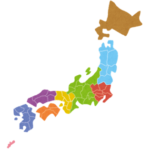 Properties in Japan are segmented into region, prefectures, cities then by エリア「eria」 or 沿線「ensen」which means “area” and “along the line” respectively. “Along the line” refers to train lines operated by JR or private companies. The easier option would be to choose your desired area, and then compare commute times to the nearest station. Many realtors will list this along with the other details (i.e. “5 minutes from XXXX Station”)
Properties in Japan are segmented into region, prefectures, cities then by エリア「eria」 or 沿線「ensen」which means “area” and “along the line” respectively. “Along the line” refers to train lines operated by JR or private companies. The easier option would be to choose your desired area, and then compare commute times to the nearest station. Many realtors will list this along with the other details (i.e. “5 minutes from XXXX Station”)
 Other factors regarding the location would be how close it is to your workplace, station, supermarket and other locations you deem necessary. Always be sure to check the map and survey your surroundings!
Other factors regarding the location would be how close it is to your workplace, station, supermarket and other locations you deem necessary. Always be sure to check the map and survey your surroundings!
Cost
Rent would be the first thing you look at, but do take note of the other costs too! This section is divided into two types of costs; Monthly (recurring) frees and one-time upfront payments.
 Monthly fees
Monthly fees
These include your rent and management fees. In most cases, the monthly cost excludes utilities.
賃料「chinryo」= rent
管理費 「kanrihi」= management fee
○○サポート 「sapoto」= support fee (usually applies to mansions only)
 One-time upfront fees
One-time upfront fees
These include security deposits, key money, cleaning fee, disinfection fee and support fees.
敷金 「shikikin」= security deposit (no, you do not get this back after your lease)
礼金・鍵交換費 「reikin, kagi-koukanhi」= key money or key exchange fee (same thing)

消毒代 「shoudoku-dai」= disinfection fee
室内クリーニング 「shitsunai kuriingu」= indoor cleaning fee
合計 「goukei」= Total
Hence, do not rush through a listing and study the other costs carefully. Upfront payments may sometimes cost as much as 1 to 5 times your monthly rent!
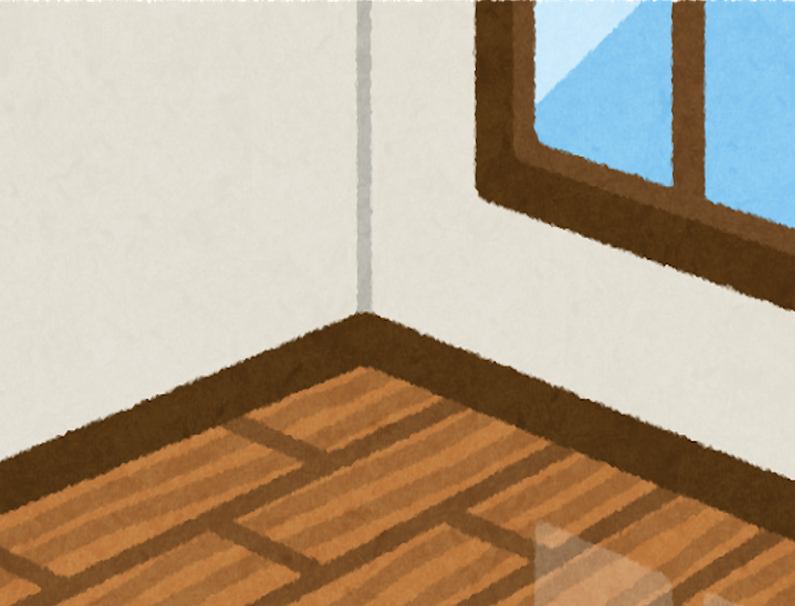
Step 3: Check the Place Out!
 Generally Japanese properties are measured in 畳「tatami」, literally counting the tatami mats. But an easier classification is by L, D, K and R which stand for Living, Dining, Kitchen and Room respectively.
Generally Japanese properties are measured in 畳「tatami」, literally counting the tatami mats. But an easier classification is by L, D, K and R which stand for Living, Dining, Kitchen and Room respectively.
It is usually paired with a number (e.g. 1K) means there is a room and a kitchen, and its separated. ○○R or ○○K is the smallest while ○○LDK is the biggest.
Remember, 1DK has a dining room, a balcony and the bathroom and toilet are separated!
Other Conditions
 After deciding on the location, there may be more conditions which you’d like to narrow your search to. To filter your conditions, look for the term 絞り込み物件「shiborikomu bukken」. Here, I’ll list some popular conditions and also my personal preferences when searching for property listings.
After deciding on the location, there may be more conditions which you’d like to narrow your search to. To filter your conditions, look for the term 絞り込み物件「shiborikomu bukken」. Here, I’ll list some popular conditions and also my personal preferences when searching for property listings.
賃料「chinryo」 = rent/lease fees. Other words include 管理費・共益費込み、礼金なし、敷金・保証金なし (management fee/ service fee included, no key money, no security deposit)
間取り「madori」= floor plans, 1R ~ 5K and above
物件種類「bukken shurui」= types of properties,アパート、マンション、一戸建て (apartment, mansion, detached house)
駅徒歩「ekitohou」= walking distance from the nearest station
築年数「chikunensu」= age of the building
こだわり条件「kodawari jyouken」= filtering options. These include:
● 駐車場あり = parking spot
● バス・トイレ別 = separate bath and toilet
● ペット可能 = pets allowed (sometimes its ペット相談 which means open for consultation on having pets)
● 2階以上 = level two and above
● 写真付き = with pictures
● 南向き = facing south (facing the afternoon sun)
Step 4: Final Tips
Personally, my advice for choosing an apartment is choose one that is a few stations off the city center. It’s cheaper and still a stone’s throw away from the main hub.
Next, take note if there are any colleges or universities around you. This gives you an idea of the demographics of the occupants in that area. My neighbor looks to be in his 20s and has friends that come over until 12 or 1 a.m. most nights. You may want more quiet neighbors yourself!
● Try not to get rooms with Japanese-style (tatami) rooms if possible. Though I love Japanese rooms myself, maintenance for tatami can be a pain and once you move out, you may incur additional cleaning and replacement costs which can go into the range of 10,000 to 20,000 yen. Hardwood or tiled floors are considerably easier to clean.

● Opt for at least a 1K where the kitchen and bedroom are separated by a door to prevent your bedroom from smelling like food.
● Opt for level two an above as you’ll have more privacy and sometimes it comes with a veranda. This is particularly recommended for women, and for those who plan to hang their laundry outside on sunny days.

● Sites such as GaijinPot can help with finding guarantor-free apartments. Keep in mind that it’s easier to find more localized listings from Japanese-language realtors as the selection is more limited, but it is another option to consider.
● Properties by providers such as Leopalace come with preset furniture (which can be replaced if something breaks down, like the microwave) Pay attention to the 築年数 though, as some older buildings have defects (this is listed right on the provider’s page for the apartment. Generally if it’s within the last 5-10 years you’re fine.)

● Finally, a south-facing room is a mixed point. You’d be able to dry your clothes better in the sun but you will also face the full brunt of summer.
Looking for an apartment can be daunting at first. Hence, if you have a friend or acquaintance already living in Japan, seek their advice or help when choosing your first property. Or in most cases, the company that is sponsoring your visa (such as Borderlink for those looking to become Assistant Language Teachers) can also help. After all, you can’t work in Japan if you don’t have a place to live in Japan first!
All the best in your apartment hunting!

Photo Credits:
Top photo: th0852さん on PhotoAC
All additional images courtesy of irasutoya.
All other content (text) created by the original author and © 2022 MUSUBI by Borderlink
Top photo: 78designさん on PhotoAC
Living in Japan can be challenging, especially for people coming from other parts of the world with a complete different culture and way of life. Like in any other country, those from abroad who live here in Japan are expected to be ambassadors for their countries. Hence, they’re obliged to many by-laws representing the way life is conducted.
Language Is Life
The language barrier is obviously one of the problems encountered by many. But recently, we have seen some changes on how other languages are introduced in Elementary and Junior High Schools. In 2020, the Japanese government decided that that the foreign languages subject will be compulsory for fifth and sixth graders.
A lot of improvement has been seen recently as some schools in different parts of Japan have started their own programs of teaching the English language. The objective is to enable students to communicate by using the language to improve their perspective and analyze various issues. In this way, we are currently witnessing the world becoming smaller.

Olympic Hurdles
The opportunity to host the Tokyo 2020 Olympic and Paralympic Games last year was massive in establishing awareness. Much-needed understanding of the language was required to ensure that the competition ran smoothly. Many programs were introduced during that period which helped in one way or another.
One such program was the introduction of sign boards written in English, particularly on roads, trains and railways. Unfortunately, due to time constrains, this program was deemed “not always successful”. In some parts of the city where railway line companies tried to put signs, they were difficult to understand or gave completely inaccurate information.
Ultimately this example shows that there is still much room to grow. The city of Tokyo had its heart in the right place; what it needed was more cerebral analysis before creating the signs to ensure they would be understood. Or to put it another way, anyone can put paint on a canvas, but a great artist knows how to put the paint on the canvas.
What the Future Holds
The unexpected war going on in Ukraine has recently become an opportunity for Japan to make progressed in advancing the use of other languages. Refugees from Ukraine, including young students and their parents, have been welcomed in Japan. In some cases the children have been introduced to the elementary school system.
Among the progress made by the Japanese government is by allocating almost $8.85 million (USD) to the Ministry of Education, Culture, Sports, Science and Technology. This mainly to enable the ministry in dealing with the issue of inadequate number of language teachers in Elementary and Junior High School.
There is still much more to be desired, especially with the issue of opening up the country to newcomers from all around the world. Making it possible for people to become comfortable with speaking English and other languages is the end goal, but there are still many stumbling blocks to overcome towards getting there.
Photo Credits:
Top photo: 78designさん on PhotoAC
Additional photo: copeeeさん on PhotoAC
All other content (text) created by the original author and © 2022 MUSUBI by Borderlink
Top photo: toshi.tさん on PhotoAC
A food lover’s guide to unique and delicious cuisines in and around the city of Fukuoka.
Asanatsuko
Every day starts with a sumptuous breakfast. At the heart of Hakata City, near the famed Kushida Shrine, exists a very unique street paved with tiles. A unique and small pop-up restaurant, run by a lady named Asanatsuko who the restaurant is named after, serves the most delicious West Indian breakfast.
 Yes, I said “West Indian Breakfast”. When I say “West Indian”, I am referring to the Western part of India. The owner’s life and unique experiences during her time in India has led her to creating this wonderful culinary experience that represents the taste of that particular region. The breakfast is a simple replication of a dish called Kheema Pao. Kheema being minced meat with various spices and herbs and Pao being a type of bread served as breakfast in various parts of India.
Yes, I said “West Indian Breakfast”. When I say “West Indian”, I am referring to the Western part of India. The owner’s life and unique experiences during her time in India has led her to creating this wonderful culinary experience that represents the taste of that particular region. The breakfast is a simple replication of a dish called Kheema Pao. Kheema being minced meat with various spices and herbs and Pao being a type of bread served as breakfast in various parts of India.
I was surprised at how authentic the taste of the food was. I believe that this pop-up restaurant is not a regular affair; the owner opens the place only on some weekends. Despite the fact that it is not open everyday, people queue up in front of the place on Saturday mornings (even in the rain) to experience the delicacies of Asanatsuko. The food is absolutely delicious and reasonable to boot. Asanatsuko was quite the nostalgic experience for me, being a native of India.
Tatsuta Shokudo
The next hidden gem is located in the famed area of Ropponmatsu within the city of Fukuoka. Ropponmatsu is an area known for its numerous delicious restaurants and cafes. Among the many restaurants, I would like to introduce Tatsuta Shokudo. We move on from a scrumptious Indian breakfast to classic Japanese cuisine. A historic shokudo (dining room), this term brings to mind humble beginnings, simple foods, and a homely atmosphere.
This gem was opened in the Showa era and it is flourishing even today, thanks to its amazing food. Let’s start with the fact that every single dish is 500 yen. Yes, a one-coin menu! The most shocking part about this affordable menu is the quality of food served to you.
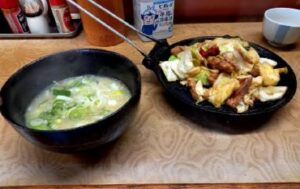 The ingredients are fresh and, the food is blissful. As a food lover, I have tried various diners, but Tatsuta Shokudo is by far my favorite one of them all. Specifically, the teppanyaki with spicy miso. This dish is to die for, the seasoning is perfect and the spicy homemade miso is etched into my memory.
The ingredients are fresh and, the food is blissful. As a food lover, I have tried various diners, but Tatsuta Shokudo is by far my favorite one of them all. Specifically, the teppanyaki with spicy miso. This dish is to die for, the seasoning is perfect and the spicy homemade miso is etched into my memory.
Something to note about the tencho or the owner/chef of the restaurant. He looks very stern and strict, but he’s actually a very kind and warm person. Once you experience the homely and wonderful food at Tatsuta Shokudo, I guarantee that you will become a regular at this hidden gem of Fukuoka.
Bangkok-ya
Now, let’s delve into the realm of Thai cuisine. Unsurprisingly, Thai food in Fukuoka is very close to the original. A tiny gem called Bangkok-ya is located in the small alleyways of Daimyo, Fukuoka. It is best known for its famous Khao Man Gai. ‘Khao Man Gai’ translates to ‘rice fat chicken’.
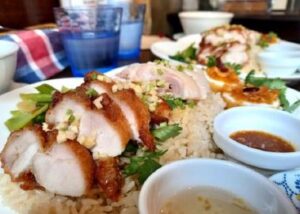 This dish is an iconic Thai dish that is only available for lunch at Bangkok-ya. It consists of chicken breast served over a bed of fragrant jasmine rice accompanied by a number of condiments such as a flavored soft boiled egg. The Khao Man Gai is has 2 varieties: A slowly braised or boiled chicken over rice, or fried chicken over rice. You can also get the half-n-half which has both. To top it all off, authentic Thai sauces can add intense flavors to an already intense dish. Hungry yet?
This dish is an iconic Thai dish that is only available for lunch at Bangkok-ya. It consists of chicken breast served over a bed of fragrant jasmine rice accompanied by a number of condiments such as a flavored soft boiled egg. The Khao Man Gai is has 2 varieties: A slowly braised or boiled chicken over rice, or fried chicken over rice. You can also get the half-n-half which has both. To top it all off, authentic Thai sauces can add intense flavors to an already intense dish. Hungry yet?
In fact, this tiny powerhouse of a Thai restaurant serves only ‘Khao Man Gai’. The restaurant closes when their food is sold out, and their food sells out rather quickly! The array of flavors and the complexity of this dish can only be understood by experiencing it. Just make sure you go early.
Duang Dee
And finally, another Thai gem located in Yakuin, an area that is also famous for its restaurants serving various delectable cuisines. It’s a place called Duang Dee. An authentic Thai restaurant that has a very calm ambient atmosphere, it is an ideal dinner place. You can get the most delectable Thai food here. I have visited Thailand numerous times, and it is very apparent that this restaurant serves some of the most authentic food in Fukuoka.
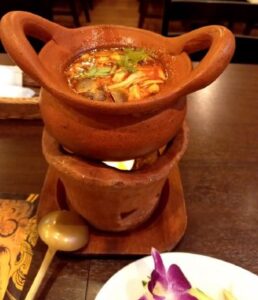 The Tom Yum Kun is one of Thailand’s most famous soups. Thai food is known for its complex flavors. The dish has spicy, sour, sweet, salty and umami flavors all together. It is a shock to your senses and a burst of intense flavors. The soup is served in a clay pot over a light flame that keeps your soup hot and appetizing throughout the entire experience. I also recommend the Poo Pad Pong curry which is made from either stir fried crab or prawn and eggs. This dish will definitely surprise you with its amazing array of flavors.
The Tom Yum Kun is one of Thailand’s most famous soups. Thai food is known for its complex flavors. The dish has spicy, sour, sweet, salty and umami flavors all together. It is a shock to your senses and a burst of intense flavors. The soup is served in a clay pot over a light flame that keeps your soup hot and appetizing throughout the entire experience. I also recommend the Poo Pad Pong curry which is made from either stir fried crab or prawn and eggs. This dish will definitely surprise you with its amazing array of flavors.
That being said, I conclude by adding that Fukuoka has welcomed different cuisines from all over the world, and I am sure that I have a lot more to experience in the future!
Photo Credits:
Top photo: toshi.tさん on PhotoAC
All additional photos provided by the original author, used with permission.
All other content (text) created by the original author and © 2022 MUSUBI by Borderlink
Top Photo: スタジオMSさん on PhotoAC
Exercise in Japan is expensive. There isn’t a lot of land space, so spacious gyms with many machines come at a premium. Even gyms aimed at regular people can cost upwards of 10,000 yen a month, especially if you want to go during peak hours. But don’t fret dear reader, for I have put together a list of 5 affordable ways to burn calories!
Riding a Bike
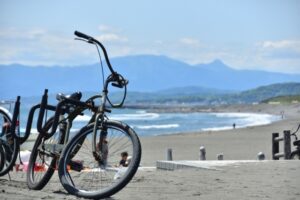 I love cycling and have loved cycling since as I was a teen. It was my first real taste of freedom, and with enough willpower I could go anywhere. The same is true in Japan. With drivers generally being more courteous, cycling is a viable option to get to work, buy groceries, do some local sightseeing, and more.
I love cycling and have loved cycling since as I was a teen. It was my first real taste of freedom, and with enough willpower I could go anywhere. The same is true in Japan. With drivers generally being more courteous, cycling is a viable option to get to work, buy groceries, do some local sightseeing, and more.
If you buy a mama-chari for 10,000 yen and ride it Monday to Friday, every month for a year, it pays off in the long run. Meaning, the total cost daily is around 41.6 yen and the total cost monthly is 830.33 yen. That is quite a cheap way to get around and get in your exercise. You may even save on train fees!
Rock Climbing
 Rock climbing is awesome! ボルダリング or “bouldering”, is a work out and problem solving at the same time. I started going by myself 2 months ago. Since then, I’ve dragged my 3 friends into going with me. Now it’s a cool hobby that we do on a weekly basis. We climb the wall, get tired, and have a 15 minute chat watching other people climb. Rinse and repeat.
Rock climbing is awesome! ボルダリング or “bouldering”, is a work out and problem solving at the same time. I started going by myself 2 months ago. Since then, I’ve dragged my 3 friends into going with me. Now it’s a cool hobby that we do on a weekly basis. We climb the wall, get tired, and have a 15 minute chat watching other people climb. Rinse and repeat.
It’s not really an appropriate place to announce your wedding or get into hours long gossip, but its a nice background activity while you catch up. Video games or Saizeriya can be next time. It’s also decently cheap. My gym costs 1600 Yen plus 300 yen for shoe rental for a total of 1900. If I go at 9, (and I do) it’s only 1600. If I bought shoes it’d only be 1300. With almost no limits on how long you can stay, even if I go 4 times a week it comes out to 5200 yen, about half the cost of a gym membership. Trust me, get some friends and go climbing. You’ll have a blast.
Swimming
 I don’t know about you, but in my hometown swimming pools were far and expensive. If you live in Kanto at least, I can testify that to be completely opposite. Many cities have government run pools. These are encouraged, especially in summer, as a way to beat the heat.
I don’t know about you, but in my hometown swimming pools were far and expensive. If you live in Kanto at least, I can testify that to be completely opposite. Many cities have government run pools. These are encouraged, especially in summer, as a way to beat the heat.
The cost for my local one for 2 hours is 520 yen. If I go swimming every weekend, that’s only 2080 yen. Your local pool could be cheaper. I’ve heard of smaller towns offering free entry and even free swimming lessons. Check around locally, a pool could literally be in your neighborhood (When I Googled a few years ago I was surprised to learn it was a 10 minute walk from my house!)
Specialized Sports
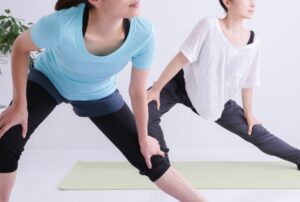 This is kind of cheating. But if you are lucky enough to live near a gym of a sport that you are interested in, It’s worth checking out. I live near a big golf gym. They got nets and you can practice your swing. They also have pull-up bars? I’m not really interested in golf, but the sign outside says 1 session is 2000 yen which is still under that 10,000 yen budget if you go 4 times a month.
This is kind of cheating. But if you are lucky enough to live near a gym of a sport that you are interested in, It’s worth checking out. I live near a big golf gym. They got nets and you can practice your swing. They also have pull-up bars? I’m not really interested in golf, but the sign outside says 1 session is 2000 yen which is still under that 10,000 yen budget if you go 4 times a month.
Martial Arts gyms, Cross Fit, Yoga all seem to be around this general price range.. The facilities they have will definitely be more specialized towards whatever sport it is, which could be a good thing or a bad depending on what you are looking for. If you enjoy the sport you are doing, you are more likely to keep doing it right? It’s worth at least a quick internet search to see what gyms are around you and if their prices are reasonable enough to give it a shot.
Local Gym
 Much like the local swimming pool, there is at least one gym in your city run by the government for a very cheap price. The upside is that they are cheap, usually only a few hundred yen to enter or sometimes free although their quality varies wildly.
Much like the local swimming pool, there is at least one gym in your city run by the government for a very cheap price. The upside is that they are cheap, usually only a few hundred yen to enter or sometimes free although their quality varies wildly.
My friend’s local gym in Mie was excellent. It wasn’t too busy, nice equipment, and very cheap. Mine was not as nice however. You can ask about your local gym by asking for Shi-ritsu gym (managed by city) Ku-ritsu (managed by ward) Ken-ritsu (managed by prefecture) or Koku-ritsu (managed by Country) If you are lucky you could have the gym to yourself more often than not, or share with people chatting on the weight bench for 30 minutes. It really is random.
Honorable mentions. Jogging is free! You can do workouts like push ups, plank or yoga at home. You can also join the clubs at your schools and participate at recess. I play basketball or table tennis every day and that’s a workout for sure!
I hope this list has given you a start into the beginning of your fitness journey or at least inspired you to explore your options. In today’s age, the world is as big or as small as you make it. So make the rest of your life the best of your life and get fit today!
Photo Credits:
Top Photo: スタジオMSさん on PhotoAC
Additional images used:
Rock Climbing- acworksさん on PhotoAC
Swimming – acworksさん on PhotoAC
Yoga – FineGraphicsさん on PhotoAC
Local Gym – acworksさん on PhotoAC
All other content (text) created by the original author and © 2022 MUSUBI by Borderlink
After arriving in Japan and tasting the delights such as sushi, ramen, and tonkatsu, I was looking for something a little different. And that’s when I found about karaage (から揚げ). Popularized in the 1920’s, it’s one of the most popular dishes in all Japan. It’s also a staple of any self-respecting Izakaya or general-menu restaurant. A good friend of mine passed on some great karaage spots in Tokyo. Now, I pass them on to you!
What is Karaage?
 Before I get to the locations themselves, there is a bit more to know about karaage. Karaage is deep-fried meat, fish, or vegetables without the use of batter. While any of those can be cooked as karaage, the most common kind is chicken. So much so that for many, the word “karaage” is synonymous with “fried chicken”.
Before I get to the locations themselves, there is a bit more to know about karaage. Karaage is deep-fried meat, fish, or vegetables without the use of batter. While any of those can be cooked as karaage, the most common kind is chicken. So much so that for many, the word “karaage” is synonymous with “fried chicken”.
According to one restauranteur’s recipe, “to get the crisp and juicy texture” small pieces of chicken are marinated in soy sauce-based broth. The chicken pieces are dredged in flour or starch powders and then deep fried. I enjoy eating karaage with a squeeze of lemon, and a side of mayo or tartar sauce is great is for dipping.
Where to get Great Karaage
 As mentioned, karaage is common at Izakayas (Japanese-style pubs) and at restaurants as a side, appetizer or even a full meal. However, there are restaurants that specialize in karaage specifically.
As mentioned, karaage is common at Izakayas (Japanese-style pubs) and at restaurants as a side, appetizer or even a full meal. However, there are restaurants that specialize in karaage specifically.
My friend recommended Ki-no-Torikara in Shibuya City, Tokyo. I was told that in Japan, if you see people lined up to enter a restaurant, then it’s definitely a great place to eat. Ki-no-Torika or KNT for short was no exception. I liked the variety of sauces to spice up the karaage; they even have chocolate sauce!
Another great spot I recommend for tasty boneless chicken is Karayama in Hachioji City, Tokyo. The chicken is crunchy and tastes great, and the prices are really affordable. I was surprised at the tasty sauces and less oil that is used in cooking. Karayama is very clean, and the staff are very friendly.
If you would like to experience true karaage restaurant atmosphere, then these are two great places that have tasty chicken. And, they’re soft on the wallet!
Photo Credits:
Additional Photo 1: マシュマロキングさん on PhotoAC
Additional Photo 2: すんたらずさん on PhotoAC
All other content (text) created by the original author and © 2022 MUSUBI by Borderlink
Top Photo: osh_appleeeさん on PhotoAC
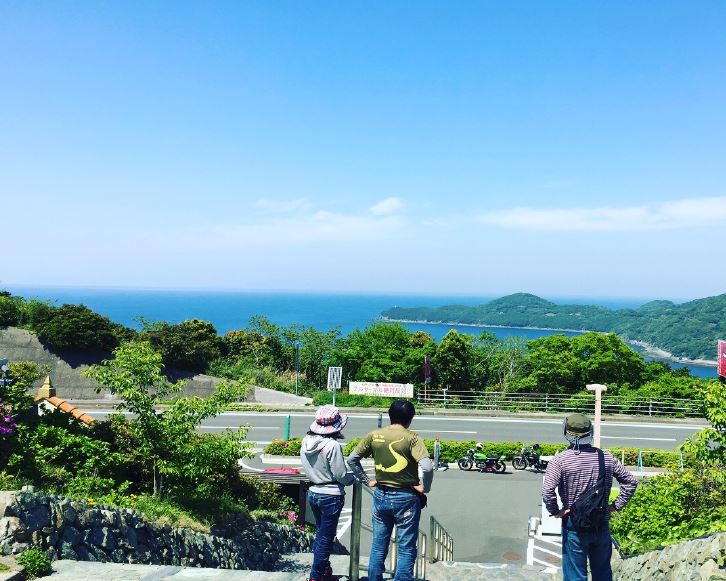
Introduction
The rainy season has ended, and the Japanese summer has finally arrived. Despite the extreme humidity and influx of pesky insects, this is probably the best time of year in Japan! With restrictions loosening, there are many ways to enjoy the season and slay the scorching heat. Here are a few of my favorites:
Sports
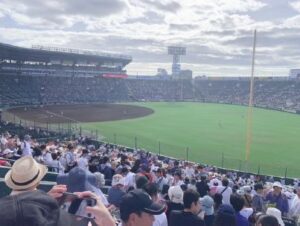 Only in Japan can you enjoy the exciting high school Japanese baseball tournament known as Summer Koshien. A two-week event that takes place at the Koshien Stadium in Hyogo Prefecture, it’s a national event. Every August, the top high schools (or top two) from each prefecture compete in numerous rounds under the blazing sun for the championship title!
Only in Japan can you enjoy the exciting high school Japanese baseball tournament known as Summer Koshien. A two-week event that takes place at the Koshien Stadium in Hyogo Prefecture, it’s a national event. Every August, the top high schools (or top two) from each prefecture compete in numerous rounds under the blazing sun for the championship title!
This tournament has been around since 1915, and is adored by people of all ages. The players often spend hours upon hours every day training and playing in the prefectural games in order to enter the tournament. Just being able to play at the tournament is a big deal for many young high school students.
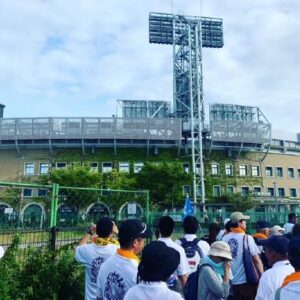 Usually the top-ranked players of the tournaments will be drafted into the professional league right after high school! In addition, playing at this tournament also leads to copious prosperous job opportunities outside of sports.
Usually the top-ranked players of the tournaments will be drafted into the professional league right after high school! In addition, playing at this tournament also leads to copious prosperous job opportunities outside of sports.
For many of the players, Summer Koshien is the chance of a lifetime! It’s absolutely recommended to watch the tournament on TV. See it live if you can get tickets!
I was fortunate to watch the first round of the tournament at the stadium in 2019 and to this day, it is one of my most cherished memories! I cannot recommend this enough; please check out the Summer Koshien tournament!
Sweets
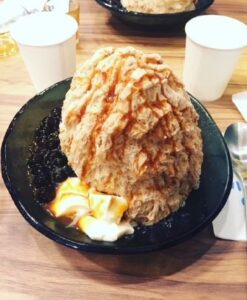 If you’re ever craving something sweet and icy then you’re in for a special treat! I recommend trying kakigori, also known as “shaved ice”. It comes in a variety of flavors such as Matcha green tea, strawberry, tiramisu, cheesecake, mango and so on.
If you’re ever craving something sweet and icy then you’re in for a special treat! I recommend trying kakigori, also known as “shaved ice”. It comes in a variety of flavors such as Matcha green tea, strawberry, tiramisu, cheesecake, mango and so on.
You can enjoy shaved ice almost anywhere, from specialty shops, trendy cafes, festival stands and at the convenience store. Additionally, shaved ice is often enjoyed with toppings as well such as azuki beans, silken tofu, mochi, tapioca pearl balls and more.
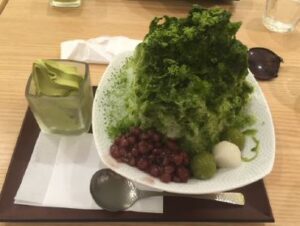
This frozen delicacy is a great way to beat the summer heat! Moreover, it’s a distinctly Japanese style of dessert to try. I recommend trying some shaved ice at Yelo in Roppongi. It is definitely worth the wait at this popular establishment!
Summer Festivals
Please check out the summer fireworks festivals in Japan too! There are numerous events across the nation, plus many areas have firework show competitions where people show off their own beautiful fireworks displays. Should you have the chance please watch the fireworks in Ise, Mie Prefecture. I think it’s by far one of the best areas to visit and experience fireworks!
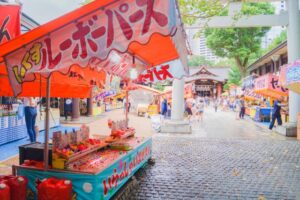 Before grabbing a nice spot to watch the fireworks, you can check out the various food stands and eateries. There are even games stands where you can win cute stuffed animals and other items. Even before the fireworks start, there’s plenty to see and do at festivals, and they’re a great way to spend some time in the afternoon.
Before grabbing a nice spot to watch the fireworks, you can check out the various food stands and eateries. There are even games stands where you can win cute stuffed animals and other items. Even before the fireworks start, there’s plenty to see and do at festivals, and they’re a great way to spend some time in the afternoon.
Many people are often dressed in a summer kimono known as a yukata, so I encourage you to wear one! I always look forward to summer festivals here in Japan, as they are a perfect way to enjoy a nice time out with friends, a special date or an exciting solo-adventure!
Conclusion
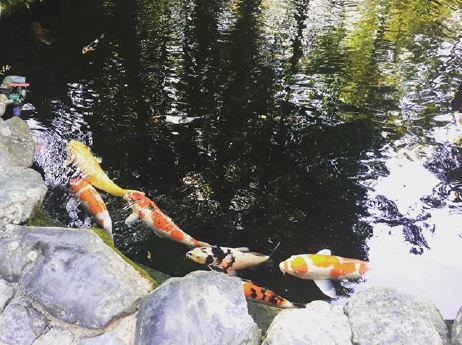
Despite the seemingly unbearable heat and humidity, I believe summer is the best time of the year in Japan. For me, I feel there is just something special in the air about summer in Japan. As a person from the east coast part of the US who normally dislikes the summer, I’ve come to cherish it more and more each year.
Begin the journey towards making your own summer memories in Japan today and become an ALT with Borderlink!
Photo Credits:
Top Photo: osh_appleeeさん on PhotoAC
Watermelon Photo by チリーズさん on PhotoAC
Festival Photo by makoto.hさん on PhotoAC
All additional images provided by the original author, used with permission
All other content (text) created by the original author and © 2022 MUSUBI by Borderlink
